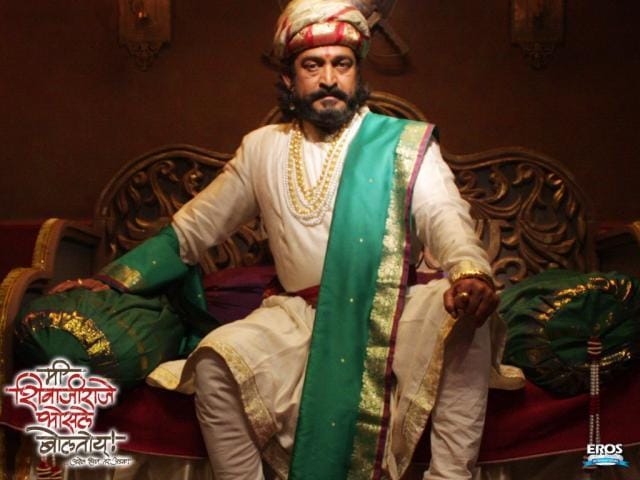Court, Lai Bhaari and more: The rise and rise of Marathi cinema
For Marathi cinema, there’s never been an up quite like the present. Now, the budgets are bigger, and they’re coming from producers across the board. The filmmakers and actors are flocking here too. As are the audiences.
Think of it like a film reel. The first few frames show Ashok Saraf in the cult comedy classic Ashi Hi Banwa Banwi (1988), standing in line to buy milk, feigning a stomach-ache to get someone to give him their bottle.Fast-forward and you come to Mahesh Manjrekar dressed all in silk, discussing with Sachin Khedekar what it means to be a Marathi manoos in Mumbai, in Me Shivajiraje Bhosale Boltoy (2009).

Fast forward a bit and you come to Salman Khan in immaculate white bumping into Riteish Deshmukh on the street, exchanging playful banter, in Lai Bhaari (2014).
For Marathi cinema, there’s never been an up quite like the present.

Last week, Court became the third Marathi film in 11 years to be sent in as India’s official entry to the Oscars. Shwaas, in 2004, was the first ever. And it brought the first wave of young audiences, filmmakers and producers flocking. Then came films like Harishchandrachi Factory (2010), another Oscar entry; Me Shivajiraje Bhosale Boltoy (2009) and Natarang (2010), drawing bigger budgets from the Marathi divisions of production companies such as Zee Talkies and making more money at the box office.

The budgets were still relatively small, most under Rs 1 crore and even the lavishly produced Me Shivajiraje… costing Rs 3 crore to make. But the producers were beginning to make their money back in spades. Shivajiraje brought in an unprecedented Rs 25 crore at the box office.
Now, in the second wave, the budgets are bigger, and they’re coming from producers across the board. The filmmakers and actors are flocking here too. As are the audiences.
Lai Bhaari had Bollywood superstar Salman Khan in a cameo, starred Riteish Deshmukh and made Rs 35 crore at the box office; even the indie and critically acclaimed Killa (2015) made Rs 10 crore.
Shankar Mahadevan will feature in the upcoming Diwali release, Katyar Kaljat Ghusali, for which Bollywood trio Shankar-Ehsaan-Loy have composed the music - a first for them.
Eros, Mukta Arts, Everest, Viacom 18 and AB Corp have begun investing in publicity - a key factor driving the greater visibility and growing audiences. Industry experts estimate the annual turnover of the industry to now be at about Rs 200 crore.
The era of the Marathi blockbuster is here.
“In the ‘90s, the youth avoided Marathi films as they were looked down upon. The stereotypical Ashok Saraf-Laxmikant Berde comedies were, in a way, cheap imitations of Bollywood,” says director Umesh Kulkarni (Deool, 2011).
Now, young filmmakers are bringing new sensibilities to Marathi cinema, on a new scale, and audiences are trooping in across the country.
Killa, for instance, was released in Delhi, Bangalore, Hyderabad, Indore, Ahmedabad, Surat, Belgaum, Vadodara and Goa. Court was released in Delhi, Hyderabad, Indore, Bhopal, Kolkata, Chennai and Goa. “There are more releases too - from 50 films a year, we are now at about 120 releases,” says Rajeev Patkar, president of the national Marathi film association.
“Many young Marathi filmmakers are coming out of film schools cine-literate. Due to their exposure to world cinema, several have learnt to tell their own stories but with a visual language that is at par with international standards,” adds Khedekar of Mi Shivajiraje…
The risk now is that the growing commercialisation will lead to formulaic plots and the emergence of a set of Marathi film clichés a la Bollywood. “The Marathi audience has always been attuned to Marathi theatre and literature, making them more discerning. Yet being the only regional audience that also watches Hindi cinema with equal ardour, we have to compete doubly to get them to watch Marathi releases,” says Nikhil Sane, business head for the Marathi division of Essel Vision Film Productions.
Adds Krishika Lulla of Eros Entertainment: “We produce Bengali and Telugu cinema as well but Marathi cinema is definitely an up-and-coming regional form. It has been leading the way.” The production house has produced Marathi films like Me Shivajiraje… and Shikshanachya Aaicha Gho (2010). In an interesting crossover, it will be facilitating a project where National Award-winning Marathi filmmaker Ravi Jadhav (Natarang, Balak Palak, Sound of Heaven - Balgandharva) will now direct a Hindi film.
Get more updates from Bollywood, Hollywood, Music and Web Series along with Latest Entertainment News at Hindustan Times.



